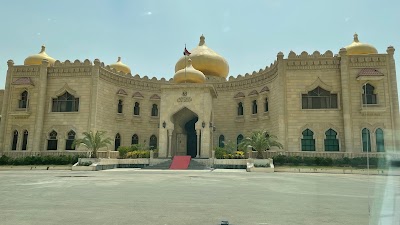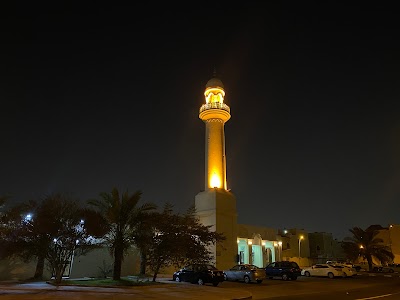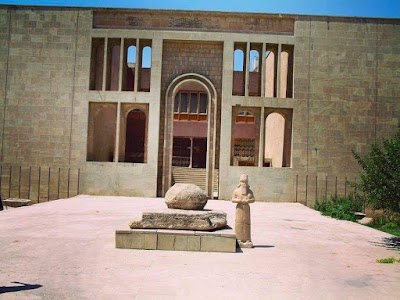Al-Salam Palace (قصر السلام)
Overview
Al-Salam Palace, often referred to as the Palace of Peace, stands as one of Iraq's most iconic landmarks, nestled in the historic region of Saladin. This architectural marvel is surrounded by lush landscapes and serves as a powerful testament to Iraq's rich cultural heritage and complex history. Its stunning design, which elegantly blends traditional Arabesque elements with modern sophistication, reflects the grandeur of Middle Eastern architecture.
The construction of Al-Salam Palace began in the early 1990s under the regime of Saddam Hussein, intended as a majestic venue for official events and a residence for high-ranking dignitaries. The palace boasts vast halls adorned with intricate mosaics, expansive courtyards, and exquisite fountains. Each room is a work of art, showcasing Iraq’s rich craftsmanship through detailed carvings, ornate ceilings, and lavish decorations, providing visitors with an immersive experience of opulence.
Historically, Al-Salam Palace has been more than just a symbol of luxury; it has played critical roles in various political and social developments in Iraq. During the United States-led invasion in 2003, the palace suffered significant damage, marking a pivotal moment in Iraqi history. In the aftermath, it was repurposed and utilized by coalition forces, adding layers to its narrative as a site of both conflict and peace.
For foreign tourists, a visit to Al-Salam Palace offers a unique glimpse into Iraq's storied past. Guided tours delve into the palace's history and its significance during various periods, transforming the visit into a vivid educational journey. Guests can explore the grand halls where banquets were once held, admire stunning artworks up close, and wander through the serene gardens that served as a secluded sanctuary for Iraq's elite.
One of the most captivating aspects of Al-Salam Palace is the artistic blend found within its walls. The decorations showcase a rich tapestry of Mesopotamian culture intertwined with Islamic influences, resulting in a mesmerizing array of designs that span centuries of artistic tradition. Visitors can marvel at meticulously crafted fretwork and intricate arabesques, reflecting the skill of artisans who drew from a deep heritage of craftsmanship.
In the early 21st century, efforts were initiated to restore parts of the palace and redefine its role in modern Iraq. Today, sections of Al-Salam Palace have been opened to tourists, allowing them to witness the grandeur that once epitomized Saddam Hussein’s regime. This transformation from a seat of autocratic power to a historical attraction speaks volumes about Iraq's resilience and ongoing efforts to preserve its cultural identity.
Additionally, the palace's geographic location provides breathtaking views of the surrounding landscapes. Overlooking the Tigris River, visitors can enjoy spectacular natural scenery that enhances the overall experience. This combination of natural beauty and historical richness makes Al-Salam Palace a must-visit destination for anyone wishing to delve deeper into Iraq’s fascinating history.
When planning a visit to Al-Salam Palace, consider exploring other historical sites in Saladin. Close by, tourists can discover the ruins of the ancient city of Assur and the Salahuddin Citadel, further enriching their understanding of Iraq's complex past. The surrounding areas embody Iraq’s historical palimpsest, where layers of history unfold at every turn.
Given its multifaceted history, Al-Salam Palace stands not only as a monument to a bygone era but also as a reminder of Iraq's enduring spirit. It offers visitors a chance to reflect on the country’s past, appreciate its cultural depth, and understand the legacies that have shaped its present. Whether you are a history buff, an art lover, or an architecture enthusiast, a visit to Al-Salam Palace promises a compelling journey through one of the Middle East’s most storied palatial residences.





